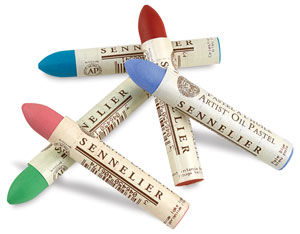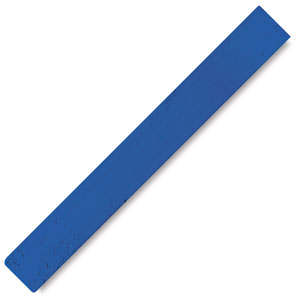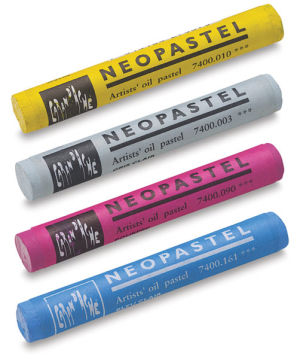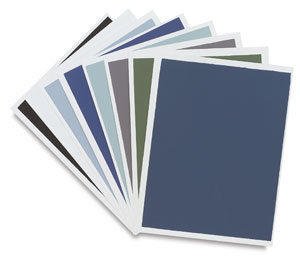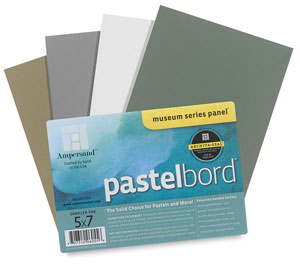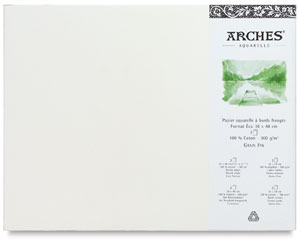Oil pastels: best brands and paper for smooth blending
Reader Question: Which brand of oil pastels is best for fine, smooth blending? Which surface is best for achieving fine, smooth blending with oil pastels - paper, board, etc?
If you'd like to achieve smooth blending with oil pastels, I'd recommend that you use one of these 3 professional-quality brands:
I've provided links below to the relevant products so that you can easily find them on Blick Art Materials, my favorite online art supplier. I'm a member of Blick's affiliate program, which means if you make a purchase after clicking on one of these links, I'll receive a small commission (at no extra cost to you). Your purchase helps support this site and keeps it free of ads. Click here for more info.
- Sennelier - has a thick and creamy consistency, almost like lipstick. Some artists say that working with Sennelier Oil Pastels are very similar to working with actual oil paints.
- Holbein - recommended by the Oil Pastel Association of America, these oil pastels are more firm than the Senneliers and they can create a nice smoothness on your paper. Holbeins are more expensive than the other two recommended brands.
- Caran d'Ache - these high-quality oil pastels are well-regarded for their smoothness and blendability. They are creamy but less oily than Senneliers, and since they are easier to layer you can achieve more detail.
Since these are professional-quality brands, they will cost more than the student brands of oil pastels, but they are worth it for the difference in quality. The professional-quality oil pastels contain more pigment and less binder, making the colors more vibrant and the application smoother.
If you are unsure of which brand to choose, you can purchase a few colors of oil pastels from each brand "open stock". ("Open stock" means purchasing them individually rather than in sets.) Test them out and see which brand you like best before investing in a set.
Many oil pastel artists like to use a combination of different brands to create their art, taking advantage of all the best qualities of each brand for doing different techniques. That may be something to keep in mind when deciding which brand to buy. You'll probably want to invest in a set of at least one brand, but then you can buy extra oil pastels from other brands open stock, to enhance your artwork.
Best surface for smooth blending with oil pastels
If smooth blending is your priority when working with oil pastels, you'll want to use a surface that is very smooth to begin with. Some papers that are labeled "pastel papers" are quite textured, which is good if you're layering (which requires tooth for the pastels to grip) - but since you want to blend smoothly with oil pastels, you should avoid any papers that are heavily textured. It's always a bit of a balancing act when it comes to having enough tooth for the pastels to grip, but not so much that it inhibits blending. For this reason, the type of surface you'll prefer for pastels depends on the techniques you like to employ.
You'll also need a surface that is heavy (that is, thick and sturdy) enough to withstand layers of oil pastels. Thin or flimsy papers will just soak up the oil and get ruined over time. If you want to use paper, choose one that is 140lb or heavier.
Here are some suggestions for surfaces that will allow you to smoothly blend oil pastels:
The Recommended Products below are there to help you browse for art supplies, and if you make a purchase we get a small commission that supports this site and keeps it FREE! Thanks in advance.
- Art Spectrum Colourfix Coated Pastel Paper - Many artists report excellent results when using Art Spectrum Colourfix Coated Pastel Paper. This paper can be purchased in packs or individually, and is available in a range of colors.
- Ampersand Pastelbord - This hard board is coated with a special clay ground that can handle several layers of pastels. The benefit of a board like Ampersand Pastelbord over paper is that the board is sturdier and stronger.
- Arches Watercolor 300lb Hot-Press Paper - This paper is heavier than the Art Spectrum Colourfix. The surface is smooth and durable.
You can also use canvas as a support for pastels. However, when it comes to blending, untreated canvas may have too much tooth. You can use a pastel ground to prepare the canvas to have the right amount of tooth you need to both hold the pastel particles and to allow blending.
When choosing a surface, remember that oil pastels never fully dry, so over time the oils will deteriorate a paper surface unless it is properly protected. If you want to use something like a heavy 300lb watercolor paper, you can apply 1-2 coats of Art Spectrum Pastel and Multimedia Primer, which will prime the paper with a fine tooth that can accept multiple layers of oil pastels.
Hope that helps & Happy Oil-Pastel Painting!
If you'l like more information, check out the pastels section in my Guide to Buying Art Supplies.


